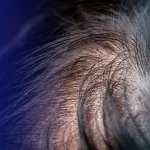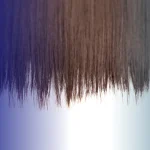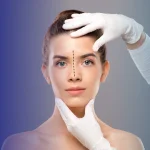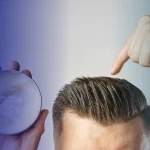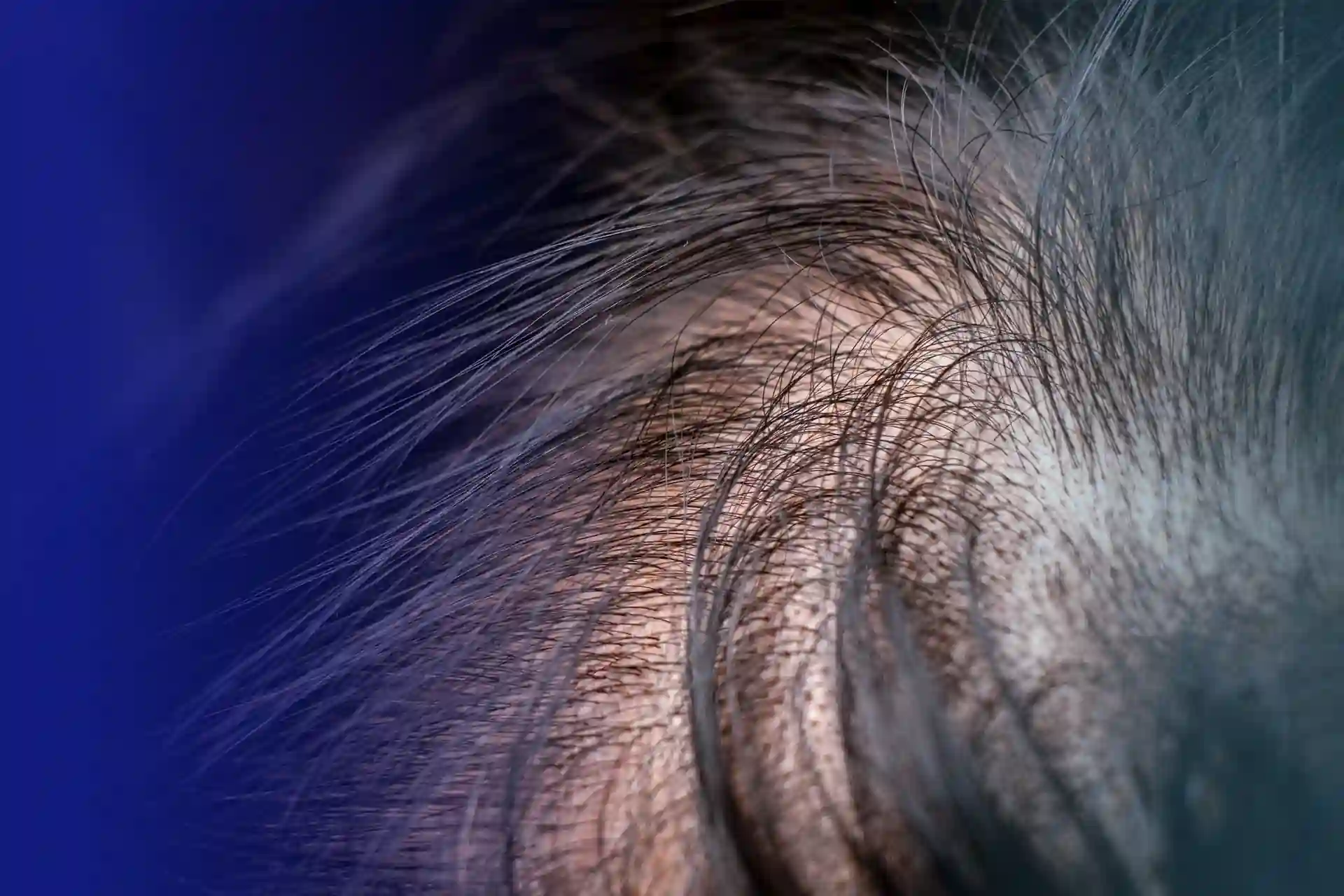
Table Of Content
Seborrheic dermatitis is a skin condition that manifests as red, itchy patches on the skin, commonly on the scalp, but also around the eyebrows, nose, chin, chest and behind the ears. The affected skin patches can feel itchy and sore, plus they can cause skin flakes and dandruff to appear in affected places on the scalp. While seborrheic dermatitis does not always lead to hair loss, it can be a contributing factor, not least when excessive scratching of itchy areas results in infection, or damages the hair follicles compromising their ability to produce healthy hair.
Seborrheic dermatitis can look very similar to psoriasis, eczema or rashes caused by allergies. It looks red on lighter skin and causes paler patches on darker skin and is often accompanied by flaky scales. If you are, or suspect that you are, affected by seborrheic dermatitis, it is important to consult your doctor as soon as you can to agree a treatment plan or to be referred on to a dermatologist for help. Many wonder, “Does seborrheic dermatitis cause hair loss?” and while it can contribute to temporary shedding, proper treatment can often reverse the effects. In cases where Seborrheic Dermatitis is very advanced, hair loss problems may occur. In this case, individuals may need to evaluate Turkey hair transplantation surgery options.
Hair transplantation clinics in Turkey should be examined for reasonable prices and quality service for hair transplantation operations. Because Turkey hair transplant cost is affordable. At the same time, hair transplantation clinics in Turkey stand out in hair transplantation operations with their services in accordance with international standards.
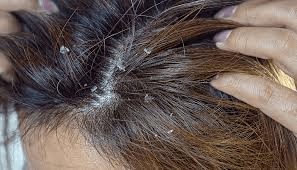
That problem in hair and on the scalp is the result of too much sebum (an oily secretion produced by the sebaceous glands) being produced and excreted. It can be caused by a number of conditions and reasons, including stress, genetic make-up, issues with the immune system, a reaction to certain medications or over exposure to cold, dry weather conditions. It Is not caused by bad hygiene, although keeping the area clean and healthy can help ease any itchiness and reduce the appearance of the dermatitis while it is being treated. Some neurological and psychiatric conditions like Parkinson’s disease or depression can be a risk factor for developing seborrheic dermatitis for some people.
Seborrheic alopecia is a condition where hair loss occurs due to seborrheic dermatitis affecting the scalp. Seborrheic dermatitis is more frequently in adults aged 30 to 60, as well as in newborn babies (until the age of three months), when it is known more commonly as cradle cap. It is more prominent amongst men and people with oily skin and often accompanies conditions such as acne, psoriasis or rosacea. Seborrheic dermatitis hair loss can also happen at any age, as it is a direct consequence of the skin condition, as well as any ill-advised heavy scratching or touching the affected areas too often.
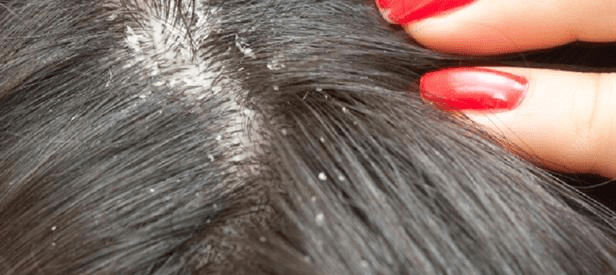
Symptoms of seborrheic dermatitis and seborrheic dermatitis balding tend to be centred around the red, itchy patches, flaking skin and loss of hair described above. Individuals may experience due to seborrheic dermatitis hair thinning as a result of inflammation and scaling on the scalp. It can also lead to pain and irritation if the area is scratched or touched too often and can also affect a person’s emotional or mental wellbeing if they are concerned or embarrassed by the condition, or if it is causing loss of sleep. The good news is that it can normally be treated fairly easily and quickly, which helps stop seborrheic dermatitis causing hair loss for most people.
If, however, you do see symptoms of hair loss or areas where the hair seems to be thinning or not growing as quickly or as well as before, there are several seborrheic dermatitis scalp treatments available, specially designed to ease symptoms, heal the condition and alleviate concerns around eczema and hair loss. Seborrheic dermatitis hair loss recovery time varies, but with consistent treatment, hair typically regrows within a few months. Hair loss before and after seborrheic dermatitis treatment often shows improvement as inflammation decreases and scalp health is restored. Ask your doctor about the best course of action for you and ask questions around whether dermatitis can cause hair loss and how to treat it to give yourself the required information and peace of mind.
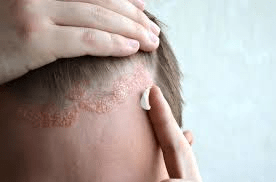
Seborrheic dermatitis can clear itself up if left alone, but sometimes a little extra help is required, or you may wish to speed up the healing process. It can be something that recurs throughout life, or you may only experience it once or twice. It is a condition that can be kept at bay to a certain extent with excellent skin care, regular exfoliating to get rid of any dead skin cells that have built up and a healthy lifestyle and diet containing plenty of vitamin B, biotin and zinc. There are also various over-the-counter medications that can help, but if you are still concerned, or your seborrheic dermatitis is particularly stubborn or prolific, speak to your doctor about more extensive treatments.
The same goes for if you are experiencing seborrheic dermatitis and hair loss or scalp eczema hair loss as this may require a different approach. You may find that switching to a medicated shampoo can help that contains antifungal ingredients, as well as coal tar, ketoconazole or salicylic acid to promote healthy skin rejuvenation and hair growth. This can help give the skin some support in clearing the seborrheic dermatitis and keep the hair follicles healthier and free from infection. Avoid using hair colourant or make up on affected areas until they clear up. This will help keep the pores of the skin free and will cleanse the area to help the skin heal. A doctor may suggest topical anti-fungal treatments too, to be applied as a cream.
Babies should have their head and hair regularly and gently washed with warm water and baby shampoo – avoid using specialist dermatitis shampoos designed for adult use on them, as these can be too strong for infants’ delicate skin. Don’t pick at the skin flakes or crusty patches, rub them too roughly. Use a baby hairbrush with gentle strokes across the affected areas instead. It is thought that exposure to sunlight can help, so spend plenty of time outdoors – using the appropriate sun cream or sun protection.

